DIY science experiments at home
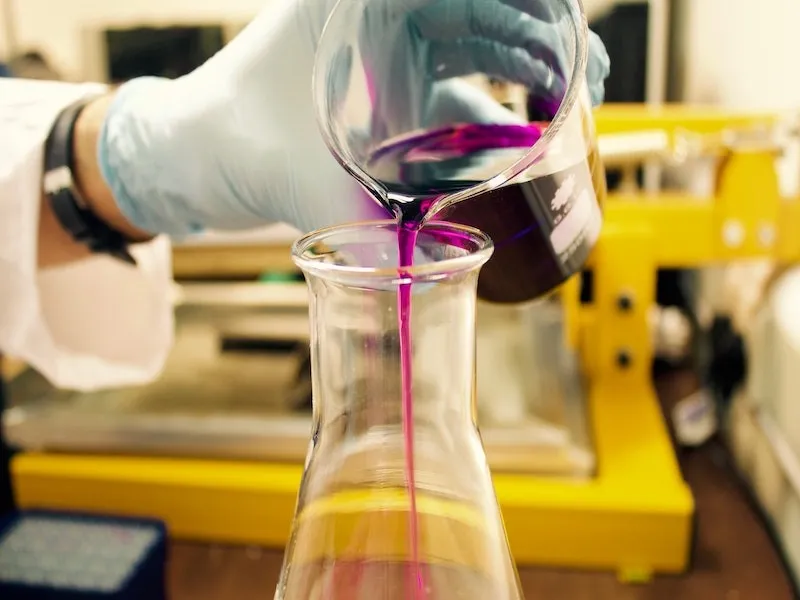
From Zap! Amazing science experiments, by Paul Holper and Simon Torok (ABC Books)
Science is everywhere and what better time to enjoy an experiment or two from the comfort of our own homes – there’s something here for kids and adults alike!
For more fun experiments every couple of months, sign up to the Scientell newsletter.
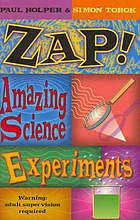
Colourful secrets
Think your purple pen is just purple? Well, think again!
In this experiment you will discover what colours are lurking in the ink of felt tip pens.
- Cut some paper towel into strips about 1 cm wide and 10 cm long. About 2 cm from the bottom of each strip, draw a small dot with a felt tip pen.
- Using a wide glass, pour water to a height of about 1 cm.
- Carefully place your paper towel strips in the 1cm high water, with the dot at the bottom. Try to keep the paper away from the sides of the glass, although it is okay to rest the top of the paper on the edge of the glass.
- Watch what happens as the water rises up the paper. You might need to keep the experiment going for 5 or 10 minutes.
- Repeat the experiment with a different coloured dot!
What’s happening?
The water moves up the paper. As it passes the dot of ink, the water carries the dyes that make up the ink at different rates up the paper. This movement of water separates the different dyes into bands, which you can see on the paper.
But wait, there’s more
Try repeating the experiment using paint or food dye. You will need to ensure that the material that you use dissolves in water.
Wow!
This technique is called chromatography. The first part of the word ‘chromatography’ comes from khroma, the Greek word for colour.
Chromatography is a useful method for separating mixtures. Scientists use various forms of chromatography to separate and identify the components of mixtures. Medical scientists, for example, can identify some diseases by studying blood and urine with a chromatograph and forensic scientists use it to solve crimes.
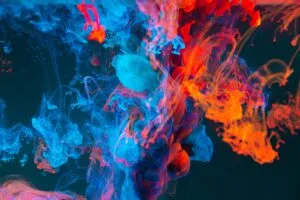
Invisible Infrared
Snakes and TVs
Infrared is invisible to humans, at least. Some snakes have holes on their face called pit organs, which can detect infrared radiation from warm bodies up to a metre away. TV remote controls use a beam of infrared light to turn on and change the channels.
Light is made up of wavelengths. The infrared wavelength is slightly longer than red light (the light that is visible to us). Let’s test how the wavelength difference behaves.
- Turn off the lights and the television. Stand a few metres away from the television, with no obstacles between it and you. First, shine a torch on the screen — nothing surprising there. Next, point the remote at the television so it turns on — hmmm, again there’s nothing unexpected.
- With the lights and television off again, repeat the experiment, but this time hold a piece of paper in front of the torch and then the remote. The torchlight won’t reach the screen, but the signal from the remote must have, because the television came on.
- Next, repeat the experiment, but this time replace the paper with a glass of water. Is this what you expected?
What’s happening?
Shining your remote control at the television is a bit like shining a torch at the television: if something is in the way, it won’t work. But because infrared light has a longer wavelength than visible red light, it can get around some objects that light can’t, such as paper, but it is absorbed by other objects that light can shine through, such as glass and water.
But wait, there’s more
Light was stopped by a single sheet of paper. What will it take to stop the remote’s infrared light? Try several sheets of paper, your hand and other objects. Will either visible or infrared light make it through a cloud of fog? Try recreating a cloud using a puff of powder and shining the torch and remote through.
Some TV remotes use a blue-tooth connection and this experiment won’t work for these. To test if your remote uses infrared or not, turn your phone camera into selfie mode and take a selfie with your remote, while pressing one of the buttons. If it uses infrared you’ll see a small reddish coloured light appear that you can’t normally see! This is because our eyes are not adapted to see infrared. Some digital sensors like the ones in our phone or computer web cam are more sensitive light, which is why they can see it.
Wow!
Astronomers use infrared radiation to ‘see’ objects in space whose visible light has been blocked by interstellar dust, such as distant stars. The observation of the universe’s background infrared glow, believed to be the traces of a huge explosion, is evidence that the universe was a single point before exploding in an event called the Big Bang.
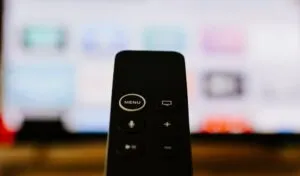
Listen to the wine
Parental permission to use wine glasses!
- Pour some water into a good quality wine glass.
- Dip your finger into the water and slowly run it evenly around the top of the glass, while holding the glass close to its base with your other hand. You may need to persist for a few seconds before anything happens.
What’s happening?
Your finger makes the wine glass vibrate, which produces an intense ringing sound.
But wait, there’s more.
What happens to the sound if you add or remove some of the water? Try the experiment using different glasses. Do glasses with stems work better than ones without stems?
Wow!
The American scientist Benjamin Franklin invented an instrument known as a glass harmonica about 250 years ago. It consisted of a set of different size glass bowls. By pedalling, the player supplied the energy to make the bowls rotate.
Before a musical performance, the bowls were tuned, by adding just the right amount of water to each to produce the notes required. Then, while pedalling, the performer would touch the rims of the turning bowls to generate notes.
The famous composers, Mozart and Beethoven even wrote music for the glass harmonica.
A real fizzer
Parental help necessary to light a match.
- Pour about half a centimetre of baking soda into a small drinking glass. Put the glass into a large bowl made of glass or metal. Make sure the bowl is in a place away from drafts.
- Find a candle that is shorter than the glass. Place the little candle upright in the bowl next to the glass. You might find that a bit of plasticine or blue tac helps support the candle.
- Light the candle.
- Slowly pour vinegar into the glass. The foaming looks pretty impressive. But that’s not the truly exciting part. Keep watching.
What’s happening?
When vinegar meets baking soda, the reaction is a fizzer. It’s so fizzy that lots of gas is made. The gas has a special name – carbon dioxide. Lots of those red fire extinguishers do exactly what you have seen here – they make carbon dioxide.
Flames love oxygen. They hate carbon dioxide. So, carbon dioxide puts out fires.
But wait, there’s more
Try the experiment again. This time put a second candle in the bowl that is a centimetre or two taller than the first candle. Light them both. Pour vinegar onto some new baking soda. Which candle goes out first? What does this tell you about how dense or heavy carbon dioxide is?
Wow!
What makes the bubbles in soda water, lemonade, cola and other fizzy drinks? Carbon dioxide. Pump carbon dioxide into water, add some flavouring and sugar and you have a soft drink. Unscrew the lid of a fizzy drink and you will see hundreds of bubbles form as the carbon dioxide escapes.
Bath bombs
Entertain the kids and then enjoy a relax after a long day in the home-office.
Pour a small amount of sweet almond oil (or jojoba, sweet almond, coconut olive or baby oil) onto a sheet of greaseproof paper or paper towelling. Use this paper to wipe some oil around the side and base of a large muffin tray, simple sand moulds or a large patty pan tray. (The quantities given here will make about five bath bombs.) You can obtain all the ingredients listed here in supermarkets, chemist shops or health food shops.
- Sift into a large bowl a half cup (125 mL) of sifted citric acid and 1½ cups (375 mL) of bicarbonate of soda. Mix the ingredients together with a spoon.
- Take half a cup of this base mixture and put it into another bowl and set it aside. This will make one bath bomb.
- In a drinking glass, mix together with a teaspoon 6 drops of lavender oil (eucalyptus and rose oil will also work), half a teaspoon (2.5 mL) of almond oil and about 10 drops of your favourite food colouring.
- Put on rubber gloves and pour the liquid from the glass into the half cup of base mixture. Use your gloved hands to quickly mix and blend together. The mixture will be ready when it stays compressed in your hand without easily crumbling. Use a spoon to fill a mould. Press down to compact the mixture.
Repeat steps 2 to 4 until you have used all the base mixture.
Leave the bombs to set in the mould overnight. Then carefully upend the moulds on a flat surface to release your bath bombs.
Run a bath, get in and add a bomb. Oh, don’t forget to get undressed!
What’s happening?
When you drop your bath bomb into water, the citric acid reacts with the bicarbonate, producing thousands of bubbles of carbon dioxide gas. Carbon dioxide is very useful in the kitchen. Yeast produces carbon dioxide, allowing bread to rise. Carbon dioxide released by bicarbonate of soda makes cakes rise. Carbon dioxide is also responsible for the bubbles in soft drinks, beer and champagne.
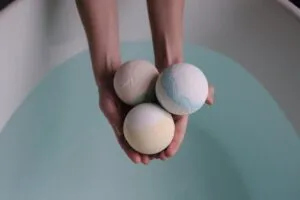
Flower power
Parental help needed to use the stove.
Drop a few colourful flowers into a medium-sized saucepan. Just cover the flowers with water and boil for five minutes. Once cooled, sieve the liquid. Pour a small volume into two glasses. Add vinegar or lemon juice (an acid) to one and a teaspoon of baking soda (a base) to the other.
What’s happening?
Hopefully, you have prepared your own acid-base indicator. Many plants produce dyes that change colour when acid or base is added to them. These dyes are called indicators because they can tell you how acidic or basic a substance is. If you don’t see any colour changes, try boiling flowers from a different plant – or even some vegetables – and repeat the exercise.
The best-known indicator is litmus, a dye made from lichens. Paper strips are soaked in the dye to make litmus paper. In acids, litmus paper is a red colour. Solutions of bases turn litmus blue.
Wow!
Plants called hydrangeas have big colourful flowers. The flowers are blue if the plant is in acidic soil. Dig the hydrangea up and plant it in alkaline soil, such as soil with a lot of lime in it, and the flowers will soon become pink.
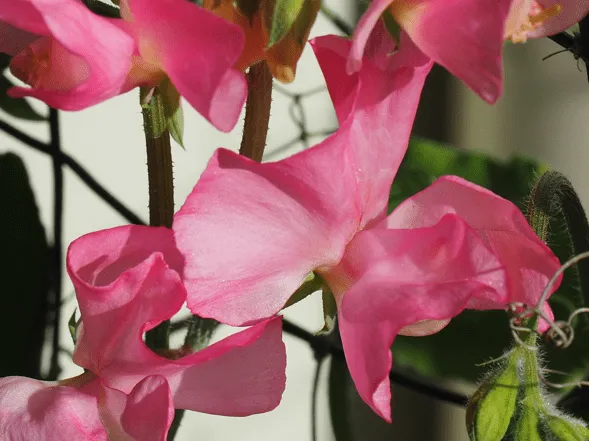
Mixing milk
Here’s a simple experiment related to surface tension in liquids.
- Pour a little full-cream milk into a jar lid or onto a small plate.
- Add one drop of a number of different food colourings to the edge of the milk, keeping the different colours as far from each other as possible.
- Watch for a minute or so to see if anything happens. Then add a drop of dishwashing detergent to the middle of the milk.
- Watch as the colours swirl and mix together.
What’s happening?
At first, the dyes are kept apart by the surface tension of the milk. This surface tension is due to attractive forces that water molecules have for each other.
The detergent lowers the surface tension, loosening the grip between water molecules and allowing all the colours to mix.
Wow!
By reducing surface tension, detergents increase the spreading and wetting ability of water, which helps to remove dirt from surfaces such as dishes and clothing.
A cloud in a bottle
Parental help necessary to light a match.
Remove the label from a large, clear plastic soft drink bottle. Pour a little cold water into the bottle. Screw on the cap and shake the bottle. Squeeze and release the bottle a few times. What do you see? Nothing? Don’t worry.
Now, open the bottle and drop a lit match into it. (The match will go out when it hits the water.) Screw on the cap and shake the bottle. Squeeze and release the bottle again a few times. What do you now see? It may be easier to observe the goings on inside the bottle if you hold it up against something dark.
What’s happening?
When water condenses, the droplets may form clouds. Particles in the air, called condensation nuclei, help the droplets form. In fact, without tiny particles in the air, clouds would not form at all. Here, the drops form on the smoke particles.
Wow!
When droplets of moisture first form in the atmosphere, they are so small that they float on updrafts of air. When lots of droplets join together, they eventually become so big that they fall to the ground. It takes about one million cloud droplets to make an average sized rain drop.
Date Posted:
August 20, 2020
